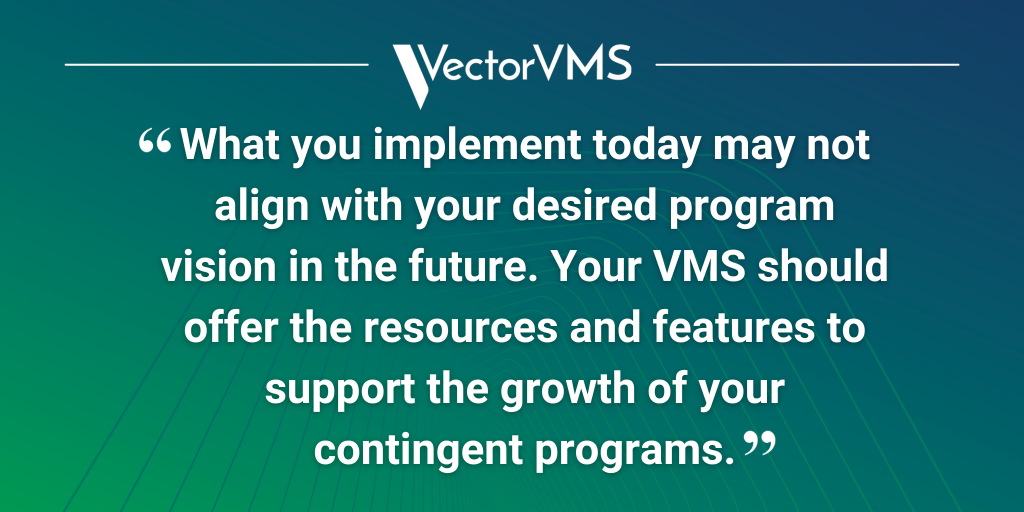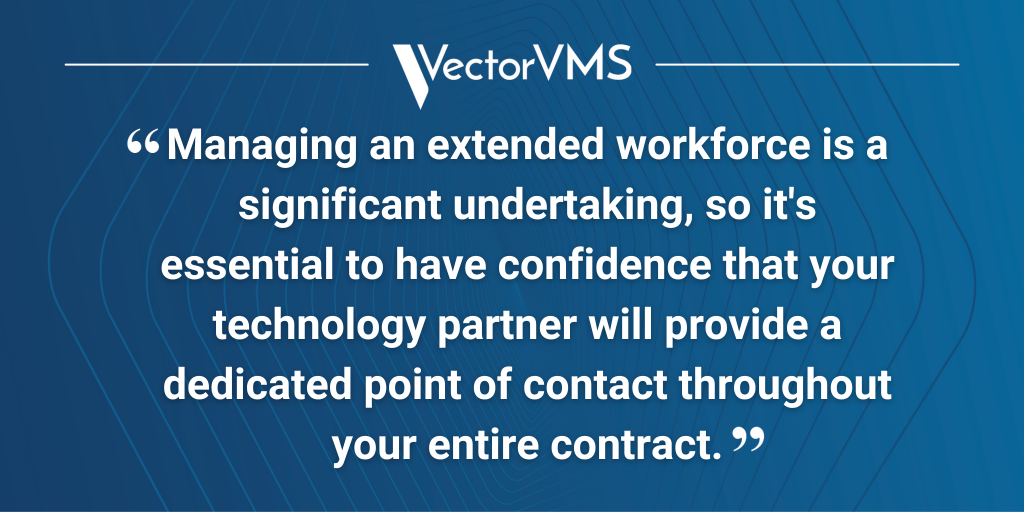Has managing your temporary, contract, and freelance workforce become a complex juggling act? It might be time to explore technology solutions to streamline your extended workforce management. This article delves into the signs that indicate you need to level up your program, the key features to consider when choosing the right solution, plus quantifiable cost savings.
Making the Jump to a Gen-1 Program
In this context, we’re referring to a “Gen-1 program” as a company initiative where software transitions from traditional in-house management of tasks with minimal or no technological support. The following signs indicate that it’s time for your organization to introduce a formal technology solution to gain visibility into your extended workforce:
- Annual expenditure on contingent workers exceeding $3 million
- Vendor population comprising more than 8-10 suppliers
- Need to standardize rates
- Contractor count surpassing 40
- Difficulty in tracking current contractor start- and end-dates
- Operating within an industry with stringent compliance requirements
If you meet one or more of these criteria, it’s time to bring technology into your program to effectively address the current (and future!) demands of your extended talent ecosystem. The typical approach to achieve this is by utilizing a vendor management system (VMS), serving as a central platform to gather all the necessary tools and facilitate important activities—from sourcing to payment.

What Are the Main Values to Look for When Implementing a VMS?
From a functionality standpoint, most VMS providers offer the same core features. Therefore, in order to make an informed decision, we recommend selecting a VMS that distinguishes itself through the following:
1) High Configurability
You need a system that minimizes changes for your end-users. Define the processes you want to retain and align them with a platform that offers the configurability to meet your needs. A reliable platform must empower you to make changes yourself, rather than relying on external configurations after go-live. Further, it must ensure all clients are always on the same version to avoid complications with new features down the road.
However, bear in mind that the VMS is there to streamline your processes. This implies that what you’re currently doing may not be the most efficient course of action. Therefore, when selecting processes to retain, choose only those delivering the expected results.
2) Great Scalability
What you implement today may not align with your desired program vision in the future. Your VMS should offer the resources and features to support the growth of your contingent programs. To assess this, consider the following questions:
- Can the technology accommodate your workforce in a staged approach, whether that involves departments, locations, regions, or countries? (including supporting multiple languages and currencies).
- Does the technology provider offer usability assessments to recommend best practices for features and demonstrate how to best use the technology?
- Can the technology incorporate multiple facets of the extended workforce, such as:
- Staff augmentation
- SOW
- Headcount tracking
- IC tracking
- Students/interns
Essentially, you want a VMS that grows with you, so pick a technology that can meet not only your current needs but also your potential future ones.
YOU MIGHT ALSO LIKE | ‘The Top 3 Recruiting and Hiring Trends HR Professionals Shouldn’t Miss in 2024’

3) Seamless Implementation Process
While there’s no direct technology cost for implementing a VMS using a vendor-funded model, transitioning your current extended workforce to a VMS requires a significant time investment. To ensure a positive experience during this process, aim for minimal change management. This entails ensuring that the vendor you select:
- Has experience working with companies of your size and skillset
- Demonstrates strong security achievements and Privacy Shield compliance
- Maintains high application availability and adheres to standards for new feature releases
- Utilizes documented and proven implementation methodologies
4) Reliable, Trusted Support
In addition to meeting technology requirements, it’s crucial to ensure that your technology provider offers the level of support you need. Managing an extended workforce is a significant undertaking, so it’s essential to have confidence that your technology partner will provide a dedicated point of contact throughout your entire contract—not just during the sales cycle.
It’s not just about making the sale or having technical know-how: they should also understand the staffing and human resources industry as a whole. This way, they can offer advice on how to grow your program and make it even more successful.
5) Up-to-Date Compliance Features
A VMS must possess the capability to manage position-specific compliance for all workers in an auditable manner, including automation to prevent candidates or workers from proceeding if compliance requirements are not met.
Compliance with the WCAG 2.1 international standard for accessibility is essential. Additionally, given the expansion of diversity, equity, and inclusion (DE&I) requirements to contingent workers under new legislation, the ability to track DE&I-related information from the sourcing stage becomes a valuable feature.
In addition, compliance with the following certifications related to cybersecurity and data privacy and protection is recommended:
- SOC 2, by AIPAC
- ISO 27001 and ISO 27701
- GDPR (in Europe)
HANDPICKED FOR YOU | ‘2 Reasons Why DE&I Should Lead Your Contingent Workforce Planning by 2024’
A Gen-1 Program Helps You Save Money
Research supports the idea that implementing the right technology can lead to cost savings. For instance, a 2023 SIA survey found that 31% of organizations using VMSs experience cost savings of 5% or more by the second year of operation (which is already a significant achievement!).
This is primarily achievable thanks to standardizing rates, utilizing data to identify areas for discounts, reducing time-to-fill and recruitment costs, and decreasing invoicing expenses. By selecting a VMS provider with all the features listed in this article, such as VectorVMS, you increase the likelihood of achieving this level of return on investment.
It’s time to transition to a Gen-1 program, and VectorVMS stands out as the ideal partner for this exciting journey. Contact us or request a demo to discover how our vendor management system can elevate your extended workforce program!
 Meet the Expert
Meet the Expert
Taylor Ramchandani – VP of Strategy
Taylor Ramchandani is responsible for the management and strategic planning of the VectorVMS vendor management system. Taylor is committed to client satisfaction and to ensuring VectorVMS technology meets the current and future needs of clients and managed service providers (MSPs). She uses market research and in-depth industry experience to create products and services that make extended workforce management efficient and intuitive. Taylor oversees product development, marketing, and business partnerships for VectorVMS and is responsible for driving innovation for contingent workforce management. Connect with her on LinkedIn.



